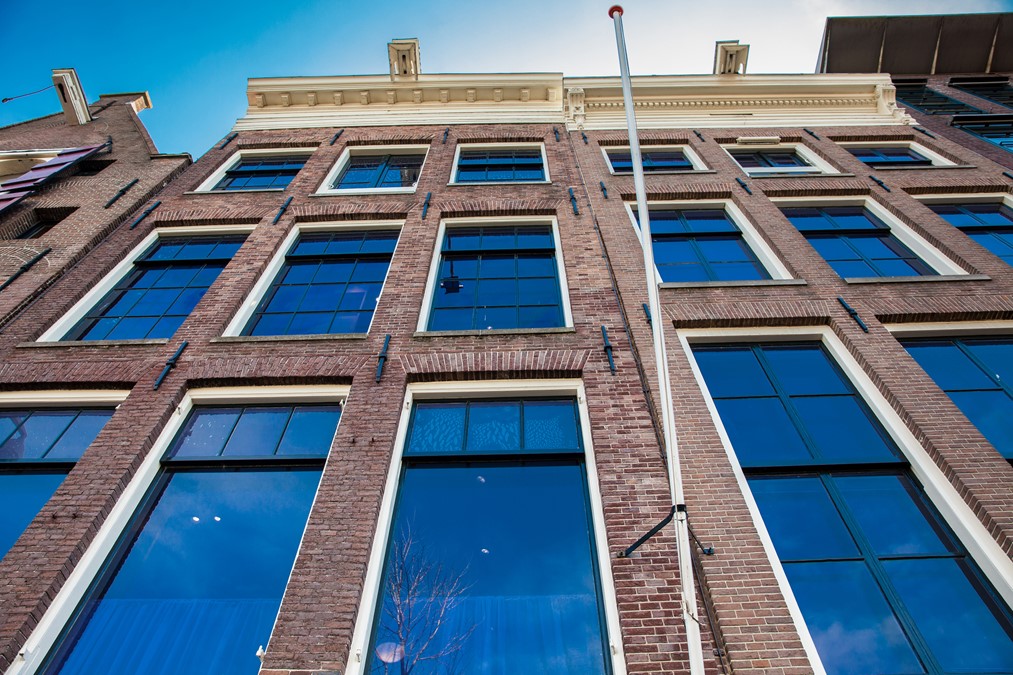Anne’s Hiding Place
I read The Diary of Anne Frank when I was twelve. I was deeply impacted by the personal story of an incomprehensible situation and ultimately, her tragic end. At the time, I slept in a room over the garage in my home, listening to records by Captain and Tennille, reading books like “Are you there, God? It’s Me Margaret?” and decorating my room in all yellow. Like most twelve-year-old girls, my room was a place of seclusion from all of the people who misunderstood. My father had just died and so hiding from whatever lurked out there (my mother’s broken heart, poverty, the boogeyman, memories) held great comfort to me. But I hid by choice.

Reading Anne Frank’s account of hiding I came to understand what real danger lurked for a Jewish girl forced into hiding during WWII. The idea of having to go into seclusion in the attic for over two years was unfathomable. I had imagined an attic similar to mine at the time. Blistering hot, cramped space and low ceiling, pink insulation tucked everywhere, amidst boxed-up Christmas decorations and discarded family mementos. I struggled to understand how she’d managed. And then I struggled to understand the meaning of evil and the realities of this thing called the Holocaust as I learned of her demise.
I visited Anne Frank’s home and museum on a trip to Amsterdam in 2014. I was intrigued by the bookcase that concealed the steps to the annex. I explored the multi-room annex (with one bathroom) that hid eight people for twenty-five months. Though relieved to learn that the space was larger than the “attic” I’d imagined, I was, nonetheless, overwhelmed by the realities of living in that manner for so long. No access to sunshine, no freedom to roam, no connection to the outside world except for a hushed radio, taking baths only once a week.
I also learned of the strawberries smuggled into the annex by the workers of the building to which the annex was connected and how such a treat buoyed their spirits, keeping them focused for days on eating, preserving, and making jam. Oh, sweet pleasures.
I learned that Anne, like most teenagers, idolized movie stars and posted photos of them on her wall. When her father, Otto, had learned of the Allied invasion of Normandy, he posted a map of France on the wall and used hatpins to mark the troops’ progress. They were all attempting to find hope in the scraps of news and normalcy they could scrabble together.
As I read Anne Frank’s diary back in grade school, I was just beginning to feel the tug of writing myself. I admired Frank’s honest writing, her humor, and her ability to grapple with the danger of her circumstances. Even as her story was sad, she was an inspiration to me. At such a young age, she boldly declared that she wished to be a writer without truly knowing that her wish would be fulfilled. Such a bold statement made with confidence and inevitability.

I had never known such a world as Anne’s, the fear and terror she must have felt. She was a girl from a different time, living in a distant country, surviving one of the most horrific times of the modern world. She was Jewish and dark-haired and skinny. We had nothing in common it would seem. And yet I identified with her loneliness, her fear, her determination, her hopefulness. Her love for her father. To me, Anne seemed a pragmatist and a dreamer, a hider and a revealer, a foreigner and a friend.
Recently, we’ve learned of a possible answer to the question of who turned in the hiding families to the Nazis. Researchers have theorized that a fellow Jewish citizen turned in the Frank’s hiding place to the authorities to potentially save himself and his own family. The key to the mystery had possibly been solved even as it raised desperate questions of humanity and agonizing choices in the name of survival. Yet, the power of Anne Frank’s story is not in how she was betrayed but in how she chose to live under the circumstances. And that she captured it all on paper for us to learn and never repeat.
There are some who say we shouldn’t expose ourselves to painful history and propose instead to look away from its realities and difficult truths. I couldn’t disagree more. I choose not to hide.



Wow! You were deep even as a twelve year old!! Who knew ?? So glad I didn’t live in that era !! I can’t imagine 😕
Loved it!! I had forgotten that Amsterdam was that long ago!
Loved this! I would love to take a trip to Amsterdam to visit the museum. One day.
Also, as I started reading I immediately thought, “I wonder if she’s read The Betrayal of Anne Frank?” I added it to my TBR list over the weekend!